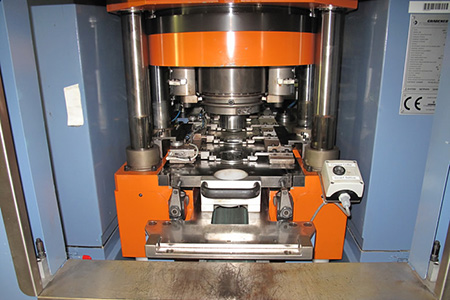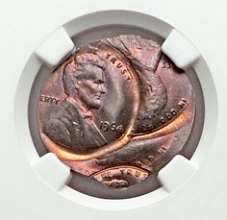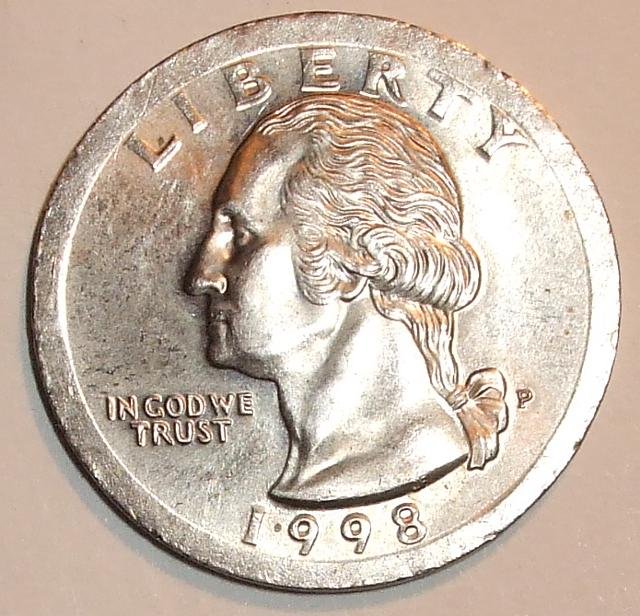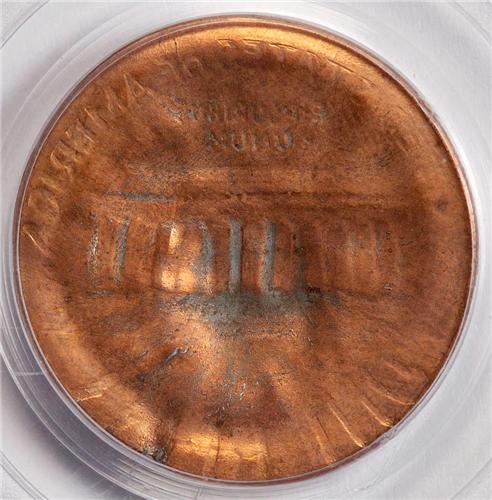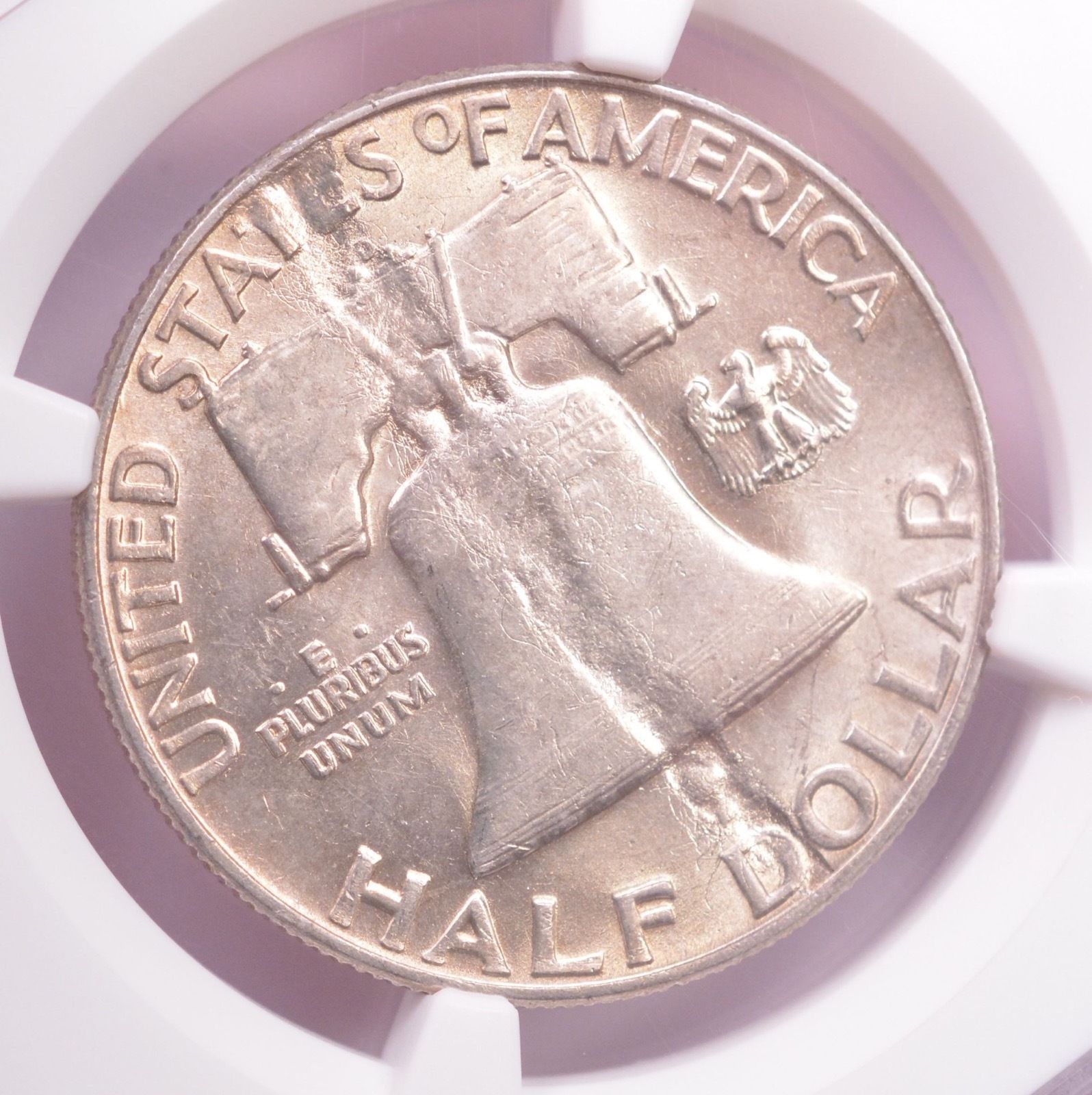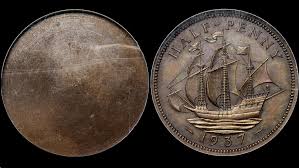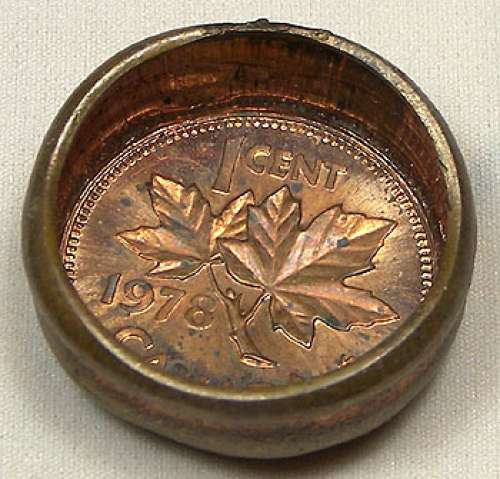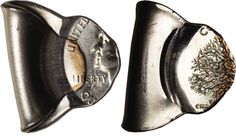After our talk on Planchet Errors, now we are going to talk about striking errors. Now there are many many ways to break up this category. I am going to cover what I feel are the big varieties: Multiple Strike, Off Center, Broadstrike, and Brockage (and its varieties), Double Denomination, and Edge errors.
To review the minting process:
- Blanks are punched from sheets of metal in a blanking press
- Blanks are heated in an annealing furnace to soften them, then run through a washer and dryer. This hardens the blanks.
- Blanks are sorted in a “riddler” to screen out errors
- Blanks are sent through an upsetting mill, to create a rim around the edges
- Planchets are struck in a coining press
- Coins are spot checked for errors
- Automated machines count and bag coins for dispersal
This post will focus on step five, striking! These are manufacturing errors, not the fault of the planchet (last post) or die (next post).
I hate to bog you down in terms, but a few more
Planchets are placed in between two dies: the anvil (the term for the reverse, tail side of the coin) and the hammer (obverse, head side of the coin). The retaining collar is a circular piece of steel that acts as the wall of the chamber (and places any design elements on the edge of the coin).
Multiple Strike
As you might guess, this happens when a coin is struck and then does not completely leave the striking press, and is struck again. The second strike is usually off center. The value of these coins increases as the number of strikes increases. A nice little ratio! This is also sometimes called multiple exposures, but should not be confused with a “double die” (again wait for the next post and I will put in the link here).
Off Center
A coin that has been incorrectly centered, outside of the collar, in the striking or coining press, thus making part of the design missing. They tend to be not circular, and the more off center, the more they are worth. However, coins that still show readable date and mint are the most valued.
Broadstrike
A bit like the Off Center above, these coins were struck outside the retaining collar but were centered. They still have all of the details of a circulation coin but are a bit larger/flatter than a “normal” coin. They also have a plain edge.
Brockage
A struck coin (A) fails to eject from the press, and a new blank (B) is fed into the machine. B is now between the hammer die and A. The press is activated. The hammer die strikes B, leaving the image from the A on the opposite side B. Resulting in a mirror image of the design impressed on the coin. Most brockages are off-center. The coins with the most value have full impressions. Indents errors are, in my opinion, included in brockage.
Strike through
If a foreign object gets into the press between the die and the planchet and is struck over. This will leave an impression on the coin. Usually, this is cloth, hair, plastic, staples, another coin (brockage) or grease.
Uni-face coin
If two planchets are stacked up on the press and are struck at one time, this results in a uni-face coin. Each coin only has once face (one an obverse, one reverse) and the other sides are blank. These can be centered or off-centered.
Die cap
The coin that stayed in the press for the brockage above (A). If it stays on the die long enough it will leave a fading impression over time and will end up changing shape to resemble a bottle cap. Coins that are going thru the press during this time tend to be called “capped die strikes”. The image here is an extream example, but so cool!
Mated pair or set
The coins that were struck at the same time or during successive strikes have errors that are related to each other. They would make up a mated pair or set. All brockages, die cap, and uni-face coins have a mate. The chance of having the set or pair is extremely rare, as one of the set may have been found by the mint, but not the other. They could have ended up going to different banks, the possibilities are endless. So if you have a set, SWEET!
Double denomination
These puppies are cool as well. When a struck coin is struck AGAIN by a different pair of dies for a different denomination, keeping details of both. Big time OPPS!
Edge and Rim Errors
When the retaining collar is defective or not in proper position an edge or rim error occurs. Wire rims that snuck out past the collar or partial collars that make a line around the coin are examples of this type of error.

